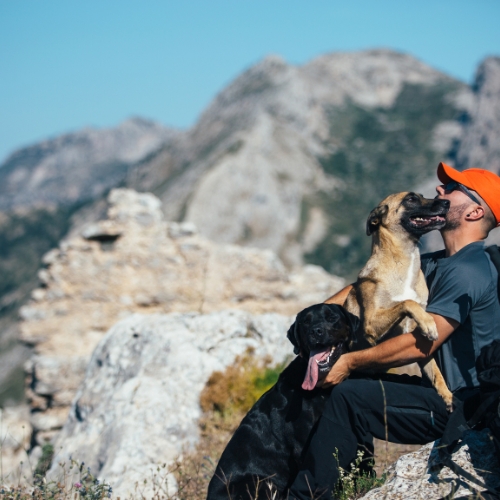How to Help Pets Adjust to New Environments While Traveling: A Comprehensive Guide
Traveling with your pet can be a fun and rewarding experience, but new environments can sometimes cause stress or anxiety for pets. Helping your pet adjust to a new location requires patience, preparation, and understanding of their needs. In this guide, we’ll cover essential tips on how to help pets adjust to new environments while traveling, ensuring a smooth and comfortable transition for your furry friend.
1. Introduce Your Pet to Travel Gradually
If your pet isn’t used to traveling, it’s important to gradually introduce them to the experience before a big trip. Start with short trips to nearby locations, allowing your pet to get accustomed to new sights, sounds, and environments. This helps reduce anxiety and makes longer trips more manageable.
Tips for Gradual Introduction:
- Take short car rides: Start with brief car rides to familiar places like a park or pet store, and gradually increase the length of the trips.
- Visit new places: Expose your pet to different environments by taking them to pet-friendly cafes, parks, or friends’ houses.
- Positive reinforcement: Reward your pet with treats and praise during and after trips to help them associate travel with positive experiences.
2. Bring Familiar Items from Home
One of the best ways to help your pet feel more comfortable in a new environment is to bring along familiar items from home. The scent and comfort of their usual belongings can help reduce anxiety and provide a sense of security.
Familiar Items to Pack:
- Favorite bed or blanket: Bringing their bed or a familiar blanket gives your pet a cozy and comforting place to relax.
- Toys: Pack your pet’s favorite toys to keep them entertained and provide a sense of normalcy.
- Food and water bowls: Use the same bowls your pet uses at home to maintain a routine and reduce stress.
3. Maintain Your Pet’s Routine
Sticking to your pet’s regular routine as much as possible can help ease their transition into a new environment. Pets thrive on familiarity, so keeping feeding, exercise, and sleep schedules consistent is key to reducing stress.
How to Maintain Routine:
- Regular feeding times: Stick to your pet’s usual feeding schedule to provide a sense of normalcy.
- Exercise and play: Make time for your pet’s regular walks, play sessions, and exercise to help them burn off energy and stay calm.
- Quiet time: Ensure your pet gets enough quiet time or rest in their designated sleeping area, even when you’re in a new place.
4. Create a Safe Space for Your Pet
When traveling, it’s important to create a designated safe space for your pet in the new environment. Whether you’re staying in a hotel, vacation rental, or friend’s home, give your pet a quiet area where they can retreat if they feel overwhelmed.
Setting Up a Safe Space:
- Choose a quiet corner: Set up your pet’s bed or crate in a quiet, low-traffic area away from loud noises or distractions.
- Use familiar items: Place their bed, toys, and water bowl in this area to create a comforting, familiar space.
- Crate training: If your pet is crate-trained, their crate can be an excellent safe space where they feel secure and protected.
5. Introduce New Environments Slowly
When you arrive at a new location, don’t overwhelm your pet by immediately exposing them to all aspects of the environment. Instead, introduce the new surroundings gradually, allowing your pet time to adjust.
Gradual Introduction Tips:
- Start with one room: Let your pet explore one room or area at a time, rather than giving them full access to the entire space.
- Supervised exploration: Walk with your pet as they explore the new environment, offering reassurance and praise to build their confidence.
- Use a leash: In unfamiliar outdoor environments, keep your pet on a leash until they feel comfortable with the surroundings.
6. Use Calming Aids if Necessary
If your pet is particularly anxious in new environments, consider using calming aids to help them relax. There are various options available, from natural remedies to veterinarian-approved products, that can help ease your pet’s anxiety while traveling.
Calming Aids to Consider:
- Pheromone sprays: Products like Adaptil or Feliway mimic calming pheromones, which can help reduce anxiety in dogs and cats.
- Calming treats: There are many pet-safe calming treats or chews that contain natural ingredients like chamomile or valerian root.
- Anxiety wraps: A Thundershirt or similar anxiety wrap can provide gentle pressure, helping to calm pets during stressful situations.
- Veterinary-approved medications: If your pet has severe anxiety, consult your vet about anti-anxiety medications for travel.
7. Keep a Calm and Positive Attitude
Pets are highly attuned to their owners’ emotions, so if you’re feeling stressed or anxious, your pet is likely to pick up on those feelings. Staying calm and positive during the transition will help reassure your pet that the new environment is safe and welcoming.
How to Stay Calm:
- Use a soothing voice: Talk to your pet in a calm, soothing tone, especially if they seem nervous or anxious.
- Positive reinforcement: Reward your pet with treats, praise, or affection when they behave calmly or explore their new surroundings.
- Lead by example: Show your pet that the new environment is safe by acting confidently and positively when introducing them to new spaces.
8. Give Your Pet Time to Adjust
Every pet adjusts to new environments at their own pace, so it’s important to give them time to feel comfortable. Don’t rush the process, and allow your pet to explore and settle in gradually.
Tips for Patience:
- Let your pet set the pace: Allow your pet to explore their new surroundings at their own pace, without forcing them into areas they may find overwhelming.
- Monitor their behavior: Keep an eye on your pet’s behavior for signs of stress, such as excessive panting, hiding, or whining, and offer reassurance if needed.
- Be patient: Understand that it may take a few days for your pet to fully adjust to a new environment, and be patient as they settle in.
9. Monitor for Signs of Stress or Anxiety
New environments can be stressful for pets, so it’s important to monitor them for signs of stress or anxiety. If your pet shows signs of discomfort, take steps to reduce their stress and help them feel more at ease.
Signs of Pet Stress:
- Excessive panting or drooling
- Whining or barking
- Hiding or avoiding new spaces
- Loss of appetite
- Pacing or restlessness
What to Do:
- Provide reassurance: Stay close to your pet, offering comfort and calm behavior to help them feel more secure.
- Take breaks: If your pet seems overwhelmed, give them time to relax in their safe space before introducing more of the environment.
- Offer distractions: Use toys, puzzles, or treats to help distract your pet and make the new environment feel more positive.
10. Stick to Positive Reinforcement
Positive reinforcement is a powerful tool for helping your pet adjust to new environments. Rewarding good behavior with praise, treats, and affection helps build your pet’s confidence and encourages them to feel more comfortable in their surroundings.
How to Use Positive Reinforcement:
- Reward exploration: Whenever your pet calmly explores a new area or interacts with unfamiliar surroundings, offer praise or a treat.
- Encourage calm behavior: If your pet stays relaxed in a new environment, reinforce this behavior by giving them attention, treats, or playtime.
- Avoid punishment: Never scold your pet for showing signs of stress or hesitation. Instead, focus on rewarding positive behaviors to build confidence.
Conclusion
Helping your pet adjust to new environments while traveling requires patience, preparation, and attention to their needs. By gradually introducing your pet to travel, bringing familiar items, and maintaining their routine, you can make the transition smoother and more enjoyable for both of you. Whether you’re staying in a new city, camping in the wilderness, or visiting family, these tips will help your pet feel safe and comfortable in any new environment.

